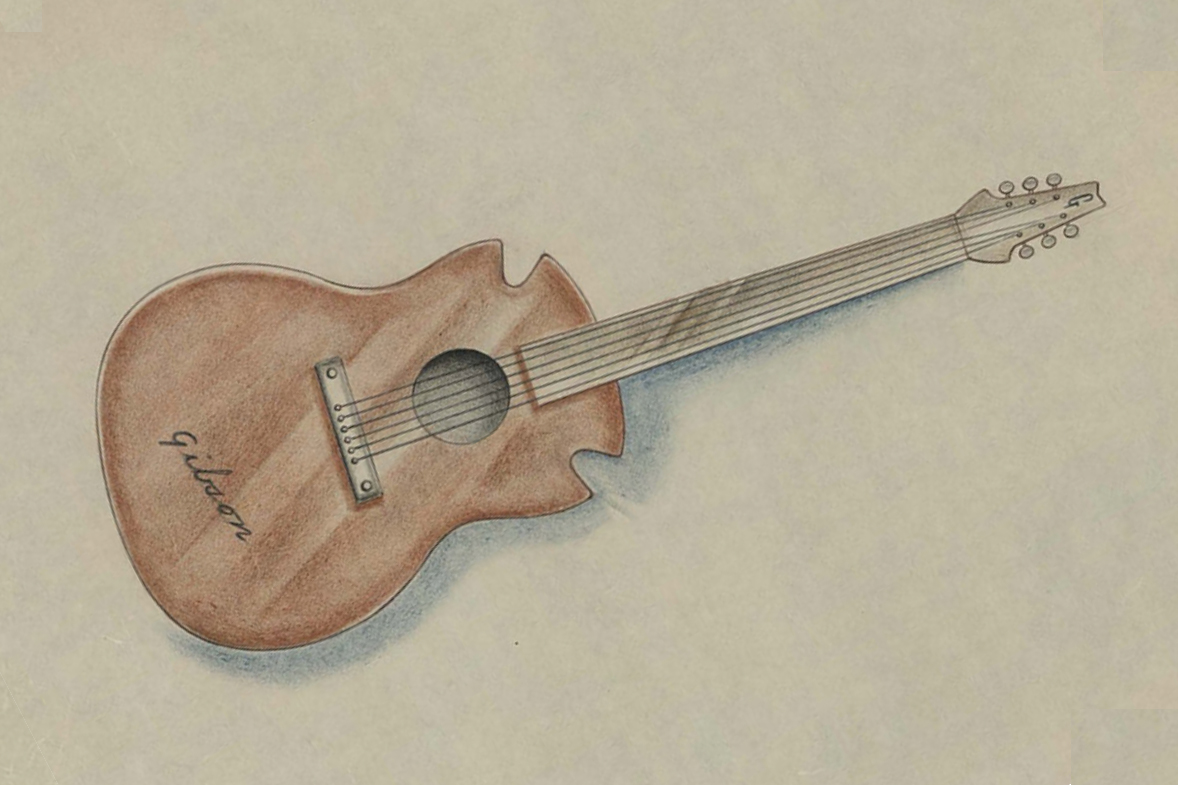Just what went on in the heads of creative teams during Gibson’s golden age?
In a new article on Reverb.com, renowned guitar historian Tony Bacon takes us back in time with a newly published exploration of drawings from the Gibson archives. He chronicles long-hidden designs that shaped the music industry’s future, with the now-iconic Explorer™ headstock being just one of the prominent yet-to-come designs hinted at in the concept art.
The article sheds light on a pivotal moment in Gibson’s history, diving deep into a 1955 meeting at Gibson HQ. This wasn’t just any gathering; it was a brainstorming session that would contribute to the birth of some of Gibson’s most iconic models, including the Explorer and the ES-335. What’s more astonishing is that these designs predate the official release of these models by several years, offering a rare glimpse into the creative process that drove innovation at Gibson during the golden era.
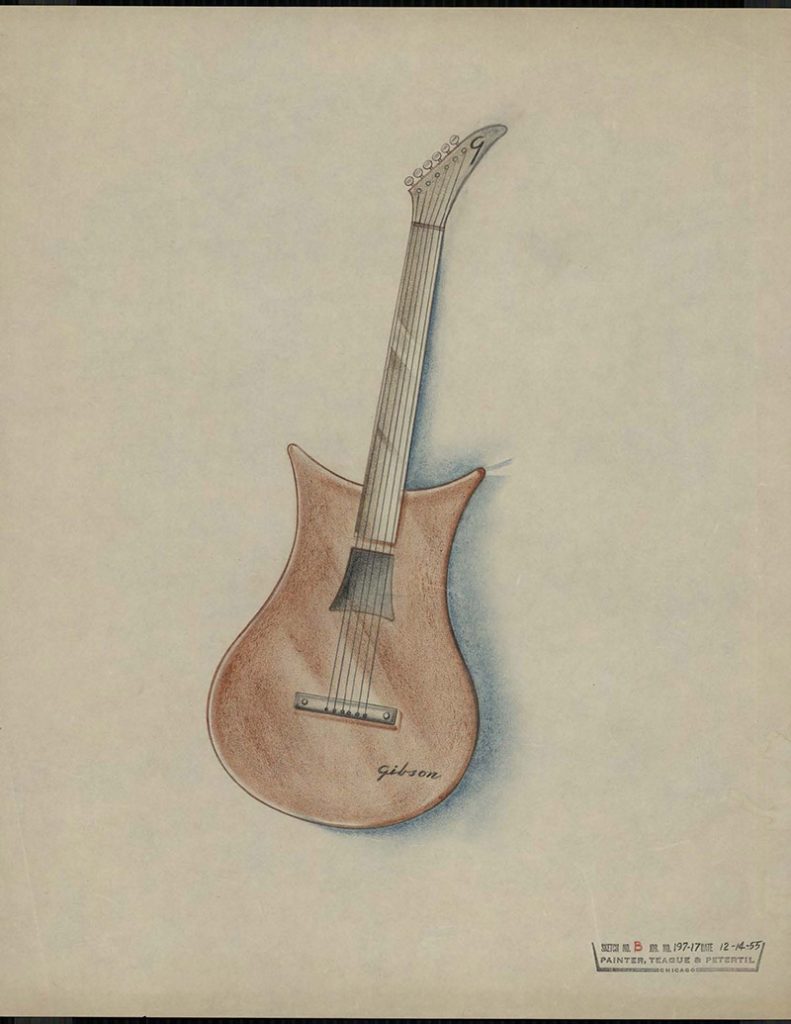
The 1950s were a transformative decade for music, setting the stage for many of the modern industry’s foundational elements. This era witnessed the birth of rock ’n’ roll, the rise of teen idols, and significant technological advancements that reshaped how music was produced (thank you, Mr. Les Paul), distributed, and consumed. Gibson was there at the vanguard of it all, crafting a brand that now stands strong at 130 years old.
Bacon’s narrative about this era at Gibson is brought to life through the dedicated research of Mat Koehler, VP of Product at Gibson, and Jason Davidson, Director of Product Development & Gibson Archives Curator. Their journey through Gibson’s archives unearthed sketches and formal designs by Painter Teague & Petertil (PTP), a Chicago design firm, that challenge our understanding of the timeline of guitar design innovation. These documents, dated November 14th, 1955, provide concrete evidence of the early ideation phases of what would become some of Gibson’s most revolutionary models.
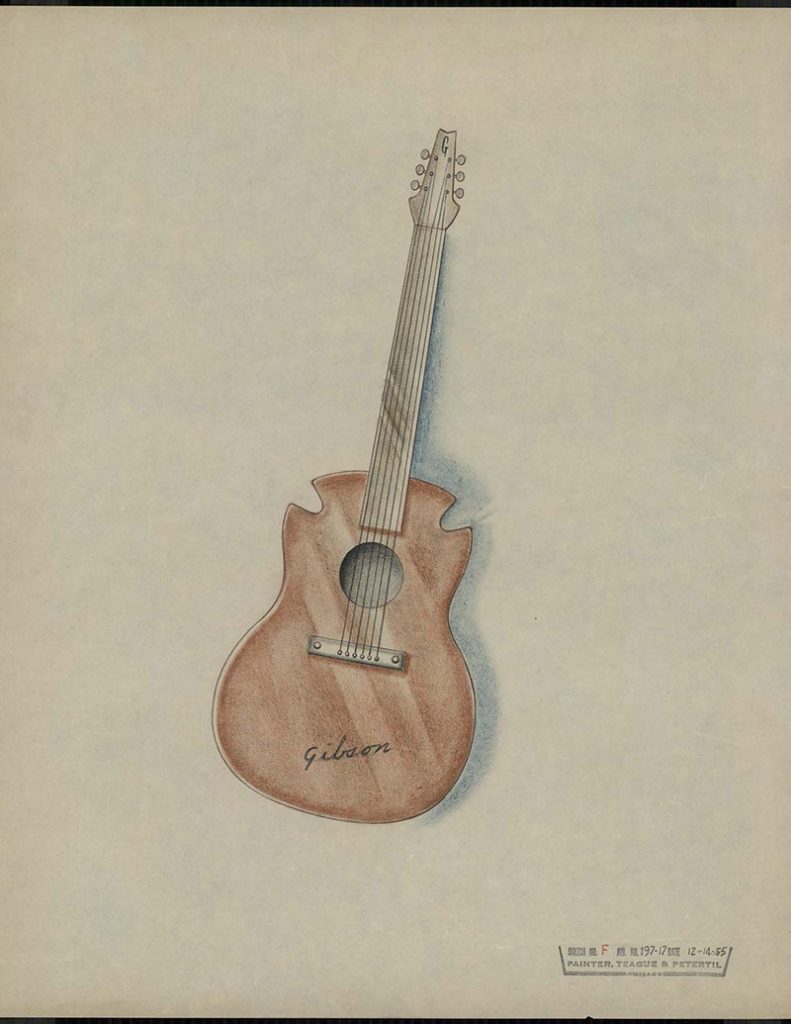
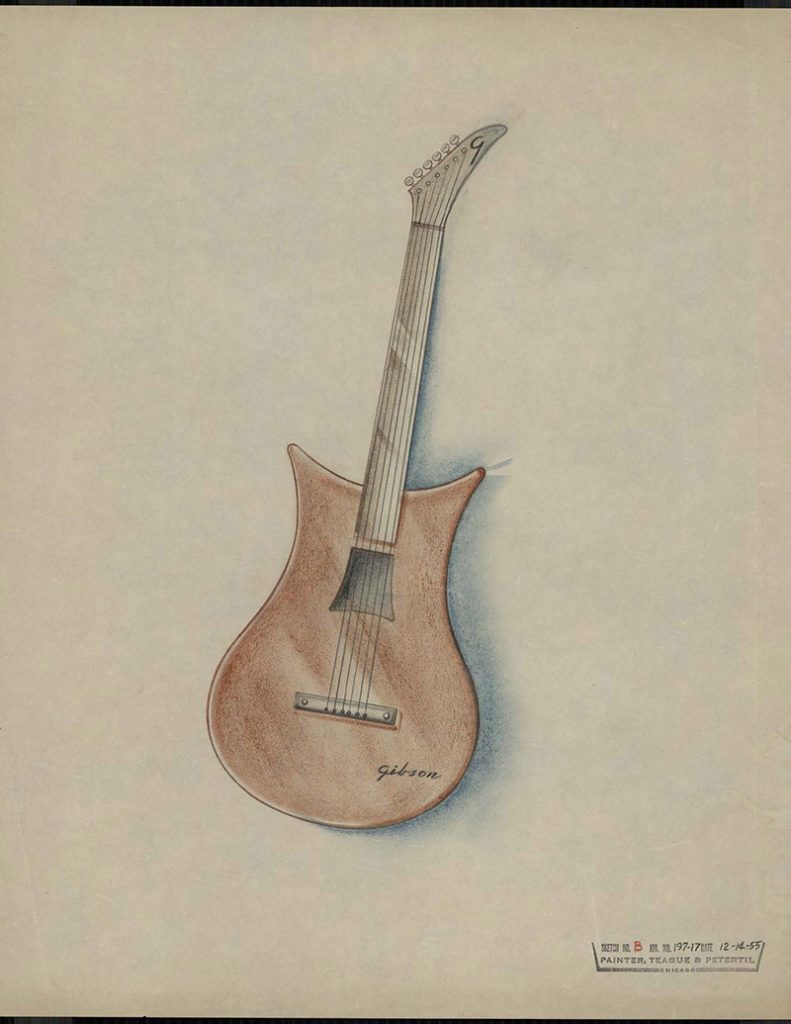
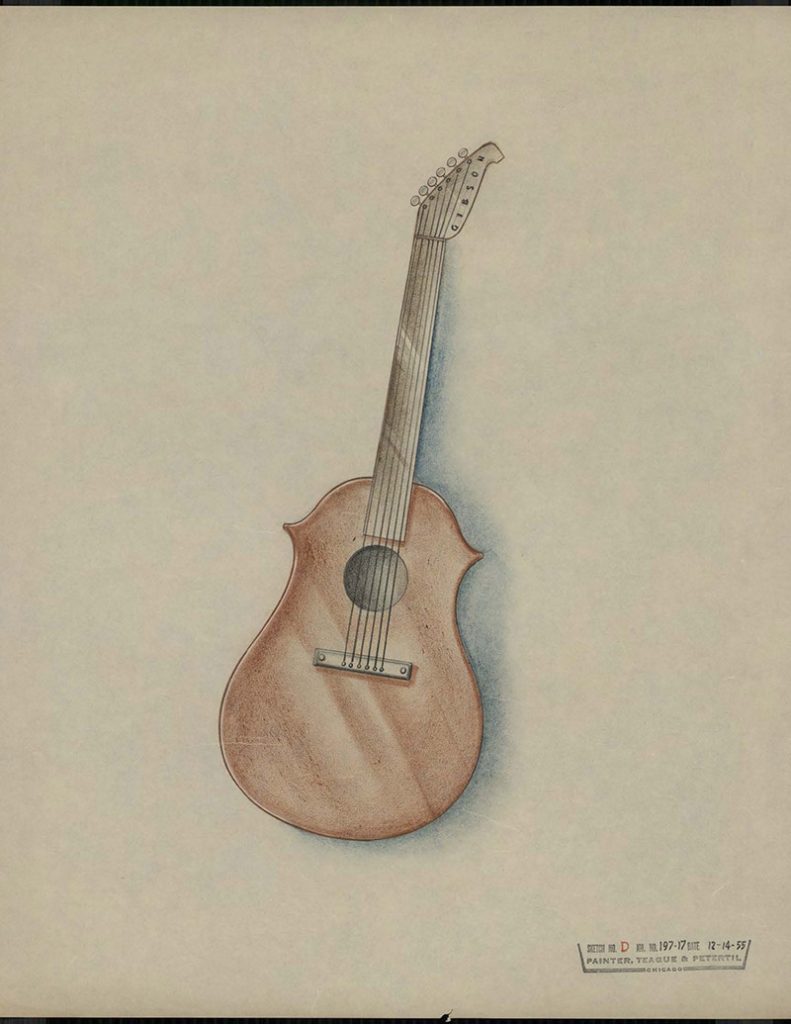
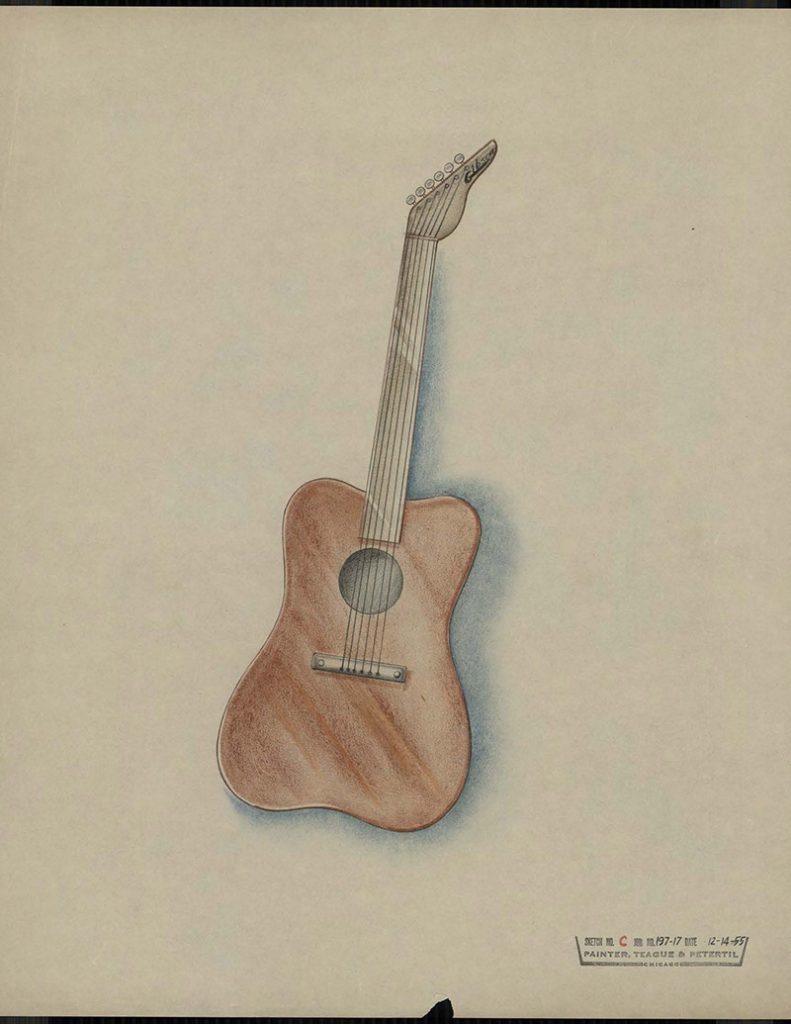
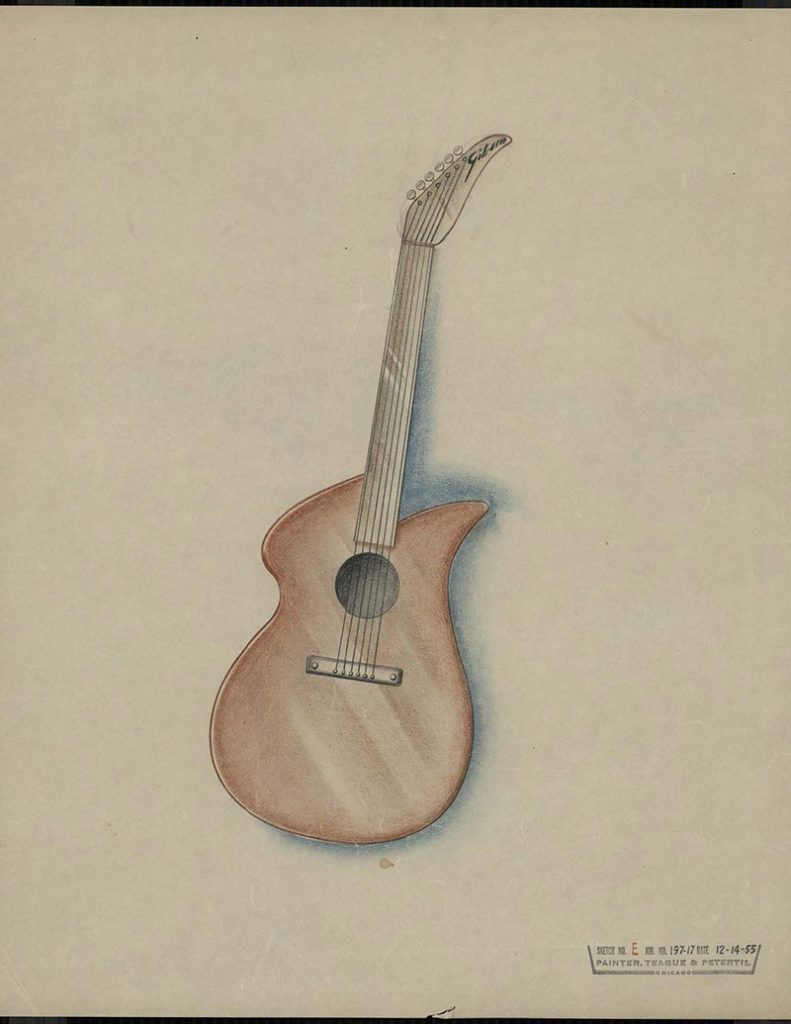
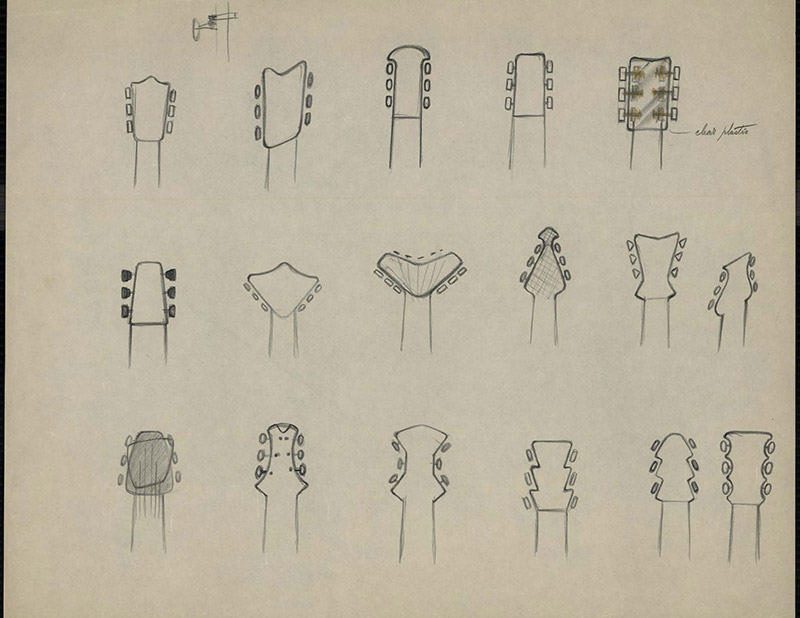
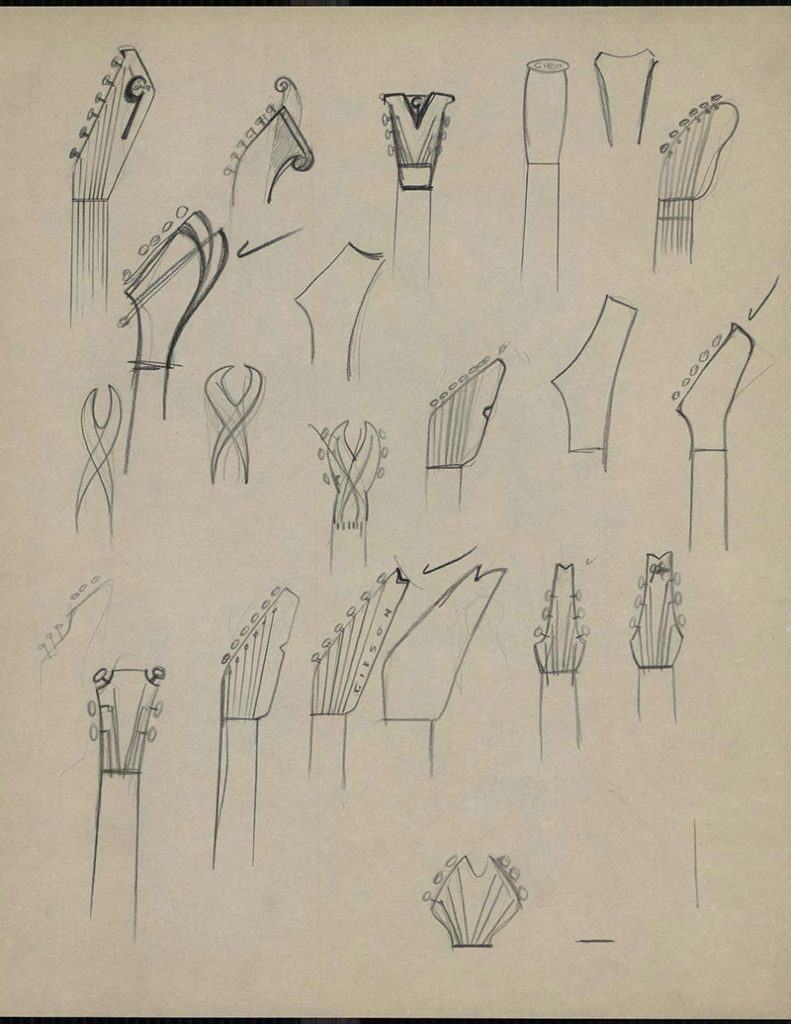

This revelation is not merely an academic exercise; it speaks volumes about the spirit of innovation that has always been at the heart of Gibson’s ethos. The sketches and designs discovered depict a willingness to explore beyond conventional boundaries, blending whimsical ideas with serious craftsmanship. This blend of creativity and expertise led to the creation of instruments such as the Explorer and the ES-335, guitars that continue to resonate with musicians around the globe. Of course, the recently released Gibson Theodore Standard also derives from a design from this era, fuelled by the same inclination to experiment.
Tony Bacon’s Reverb article invites readers to appreciate the unseen efforts and imagination that go into the instruments that have shaped musical genres and inspired generations of musicians. For Gibson enthusiasts, historians, and music lovers alike, Bacon’s piece offers a treasure trove of insights into a seminal period in guitar history.

